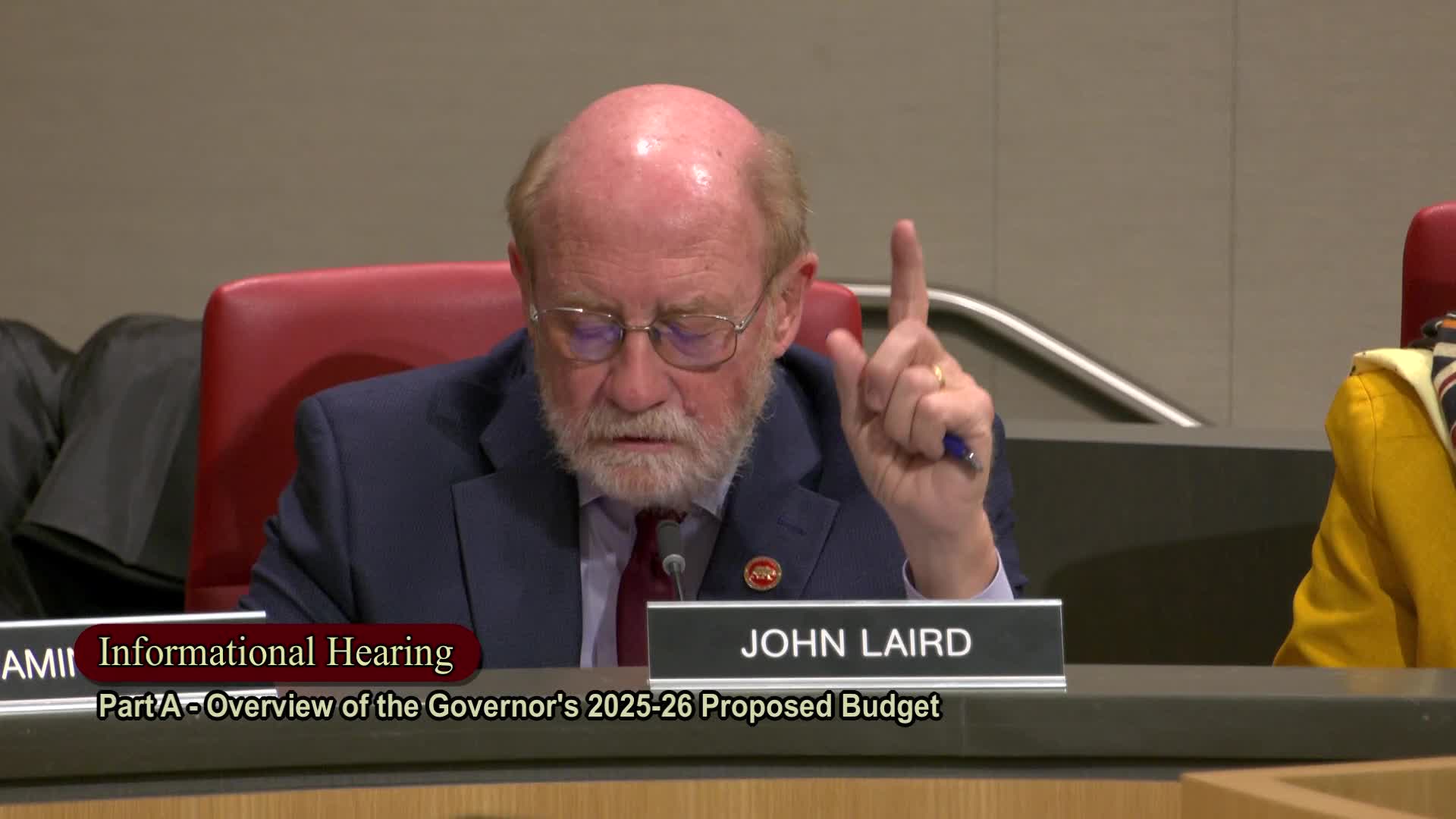California budget proposal faces backlash over potential cuts to UC and CSU funding
January 30, 2025 | California State Senate, Senate, Legislative, California
This article was created by AI summarizing key points discussed. AI makes mistakes, so for full details and context, please refer to the video of the full meeting. Please report any errors so we can fix them. Report an error »

In a recent meeting of the California State Senate's Budget and Fiscal Review Committee, significant concerns were raised regarding the proposed budget cuts to the University of California (UC) and California State University (CSU) systems. The discussions highlighted the potential negative impact of a proposed 7.95% reduction in funding, which, when accounting for inflation and existing labor contracts, could exceed a 10% cut in real terms.
Senators expressed alarm over the implications of these cuts on enrollment and overall university operations. One senator pointed out that such reductions could deter prospective students and lead to further cuts in programs and services. The urgency of the situation was underscored by recent announcements from Sonoma State University, which has already begun implementing significant reductions in response to budget constraints.
The committee members emphasized the importance of stable funding for higher education, particularly in light of ongoing challenges such as deferred maintenance and salary disparities. They questioned the rationale behind starting budget negotiations with substantial cuts, arguing that it sets a troubling precedent and undermines the universities' ability to plan for the future.
Additionally, the discussion touched on the deferral of a previously agreed-upon funding compact, which would delay a promised 5% increase to the following year. This uncertainty raises concerns about the universities' financial stability and their capacity to manage future commitments.
As the committee continues to deliberate on the budget, the implications of these discussions are significant. The outcome will not only affect the financial health of California's higher education institutions but also the accessibility and quality of education for students across the state. The senators' willingness to engage in dialogue about these funding proposals indicates a recognition of the critical role that higher education plays in California's economy and society. The next steps will be crucial in determining how the state balances its budgetary constraints with the need to support its educational institutions.
Senators expressed alarm over the implications of these cuts on enrollment and overall university operations. One senator pointed out that such reductions could deter prospective students and lead to further cuts in programs and services. The urgency of the situation was underscored by recent announcements from Sonoma State University, which has already begun implementing significant reductions in response to budget constraints.
The committee members emphasized the importance of stable funding for higher education, particularly in light of ongoing challenges such as deferred maintenance and salary disparities. They questioned the rationale behind starting budget negotiations with substantial cuts, arguing that it sets a troubling precedent and undermines the universities' ability to plan for the future.
Additionally, the discussion touched on the deferral of a previously agreed-upon funding compact, which would delay a promised 5% increase to the following year. This uncertainty raises concerns about the universities' financial stability and their capacity to manage future commitments.
As the committee continues to deliberate on the budget, the implications of these discussions are significant. The outcome will not only affect the financial health of California's higher education institutions but also the accessibility and quality of education for students across the state. The senators' willingness to engage in dialogue about these funding proposals indicates a recognition of the critical role that higher education plays in California's economy and society. The next steps will be crucial in determining how the state balances its budgetary constraints with the need to support its educational institutions.
View full meeting
This article is based on a recent meeting—watch the full video and explore the complete transcript for deeper insights into the discussion.
View full meeting
